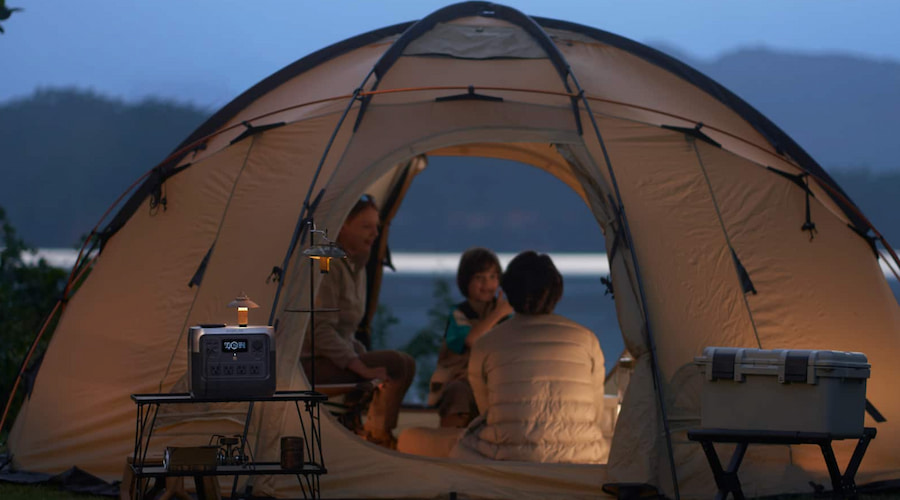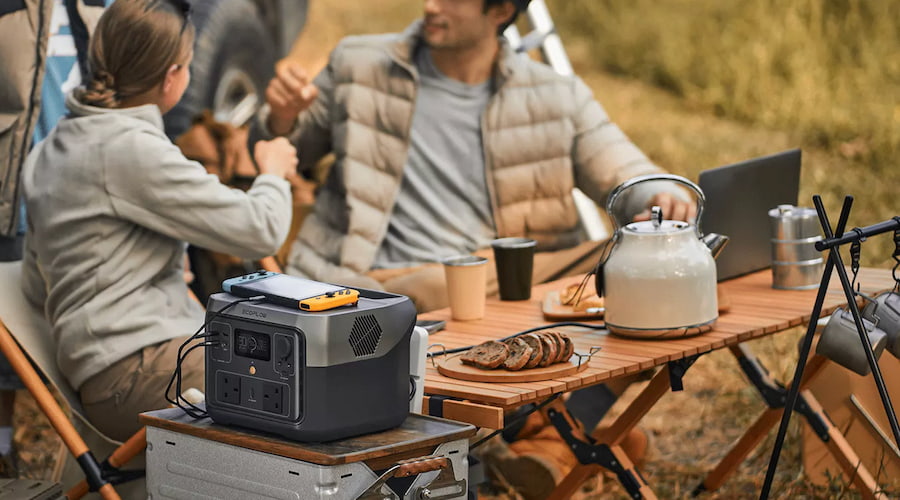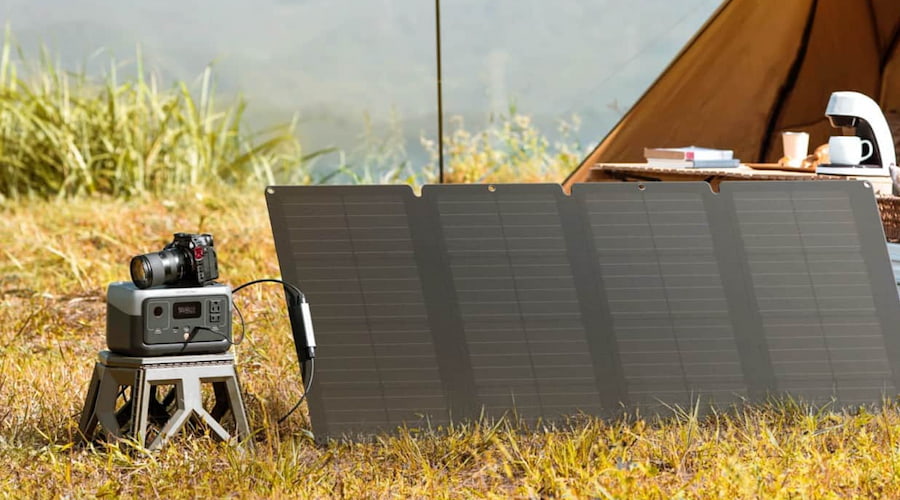Camping Essentials Checklist: What to Take for a Hassle-Free Trip
Planning a camping trip? Whether you’re heading into the Outback, setting up by the beach, or pitching a tent in the hinterlands, being prepared is the key to a great experience. With so many variables—from unpredictable weather to remote locations—knowing what to pack can make all the difference.
That’s where a solid list of camping essentials comes in. In this guide, we’ll walk you through everything you need to take with you, from shelter and cooking gear to safety tools and entertainment. Plus, we’ll share tips on how to stay clean and comfortable while you’re out in the bush.
What to Take When Going Camping
Not sure what to take on a camping trip? No worries. Below is a comprehensive camping checklist of the must-haves, broken down by category to help you pack smart and enjoy your outdoor recreation without hassle:
Shelter
Often first on the camping list, your shelter is one of the most important parts of your setup—it protects you from the elements and gives you a place to rest. Whether you’re bringing a family tent, a two-person dome, or a swag, it’s worth investing in quality and double-checking that everything’s in working order before you go.
Checklist:
Tent or swag (appropriate for group size and climate)
Groundsheet or tarp (for extra floor protection)
Pegs, guy ropes and mallet
Shade awning or gazebo (for sun protection and extra living space)
Bedding
Sleep is underrated until you’re tossing and turning all night. A good bedding setup helps you rest and recharge—especially after a big day of hiking or exploring. Think insulation, comfort, and warmth.
Checklist:
Sleeping bag (temperature-rated for season and location)
Sleeping mat, stretcher or air mattress
Pillow (camp or regular)
Blanket or doona (especially for alpine or winter camping)


Clothing & Footwear
Aussie weather can be unpredictable—even in summer. When considering what to bring on a camping trip, it’s a good idea to pack in layers so you can adjust throughout the day. Footwear should be practical and comfy, especially if you’re planning on bushwalks or uneven terrain.
Checklist:
Lightweight shirts and shorts for daytime
Warm layers: fleece, jumper, jacket, or thermals
Waterproof raincoat or jacket
Hiking boots or closed-toe shoes
Thongs or slip-ons for around camp
Hat and sunglasses
Plenty of socks and underwear
Sunscreen and insect repellent
Cooking
Eating well is part of the camping experience. Whether you’re cooking over a fire or using a portable stove, you’ll want your cooking gear clean, organised, and easy to use. Plan meals ahead so you don’t bring more (or less) than you need.
Checklist:
Gas stove, BBQ or fire setup (check fire bans)
Fuel or firewood (plus matches or lighter)
Frypan, pot and cooking utensils
Plates, bowls, mugs and cutlery
Chopping board and sharp knife
Dishwashing tub, sponge and detergent
Tea towels and bin bags
Cooler or esky (with ice) or 12V fridge
Reusable water containers
Pantry basics: oil, salt, pepper, sauces, coffee/tea
Camp Furniture
If you’re asking yourself what should I take camping, a few simple furniture items can make your campsite feel way more liveable. A sturdy table, comfy chairs, and a place to rest your feet go a long way—especially during meal prep or when winding down by the fire.
Checklist:
Folding camp chairs
Portable table
Picnic rug or ground mat
Lighting & Power
When the sun goes down, your campsite needs light—for cooking, finding your way to the loo, or just enjoying the night sky without tripping over your gear. Don’t forget spare batteries, portable power, or charging gear if you’re off-grid.
Checklist:
Headlamp or torch (preferably one per person)
Camp lantern or string lights
Spare batteries or rechargeable options
Extension lead (for powered sites)
Portable power stations and solar panels
If you’re heading off-grid or planning to camp in unpowered sites, a compact power solution like the EcoFlow RIVER 2 Pro Portable Power Station can seriously upgrade your setup.
With a robust 768Wh capacity and 800W running output (with surge up to 1600W), it can handle most of your camping appliances—from lights and phone chargers to fridges and coffee machines. Weighing only 7.8kg, it’s easy to carry and fits neatly into any car boot or camper setup.
The RIVER 2 Pro offers fast, flexible charging—plug it into mains power, your car, solar panels, or even USB-C. On AC power, it charges from 0–100% in just 70 minutes, making it one of the fastest in its class.


For longer stays or full off-grid independence, pairing it with EcoFlow’s solar panels to get a quiet and clean camping electricity generator. With a single 220W portable solar panel, you can harvest up to 1.8kWh of green solar power per day. Plus, the RIVER 2 Pro is made for the outdoors, with rugged construction, IP68 water/dust resistance, and a 10-year lifespan thanks to the advanced LiFePO4 battery.
Want more flexibility? You can choose from a range of 110W, 125W, 160W, 220W, and 400W solar panels for camping at EcoFlow. For instance, the NextGen 220W Bifacial Portable Solar Panel features a clever two-in-one design to capture energy from both sides, boosting output by up to 25%, while the adjustable bracket and rugged, waterproof build make it ideal for the outdoors.


Navigation & Safety
Even if you’re heading to a well-known campground, it’s smart to be prepared for the unexpected. Having a few basic navigation tools and safety items on hand can make a huge difference—especially in remote areas with limited reception or signage. It’s all about keeping yourself oriented, connected, and out of trouble.
Checklist:
Offline maps or printed topographic maps
Compass or GPS device
Whistle or signal mirror (for emergencies)
First aid app or emergency contacts saved offline
Personal locator beacon (PLB) or emergency GPS (if going remote)
Pocket knife or multitool
Small fire extinguisher or fire blanket (for vehicle-based campers)
Hygiene & First Aid
Staying clean in the bush can be surprisingly easy with the right setup—and it’ll help you feel more refreshed and comfortable day to day. Plus, a basic first aid kit should always be on your camping tick list, even for short getaways.
Checklist:
Toilet paper and biodegradable wipes
Hand sanitiser and biodegradable soap
Quick-dry towel and washcloth
Toothbrush, toothpaste, deodorant
Trowel (for digging a loo if needed)
First aid kit (with plasters, antiseptic, bandages, tweezers, pain relief, antihistamines)
Insect repellent and bite cream
Sunscreen and lip balm with SPF
Personal medications (plus extras in case of delays)
Storage
Good storage keeps your gear organised and accessible—and prevents things from getting damaged, wet, or lost. It also helps keep your food fresh and critters out of your tent. Look for options that are compact, stackable, and weather-resistant whenever you can.
Checklist:
Plastic tubs or storage crates (for gear and food)
Dry bags or waterproof stuff sacks
Ziplock bags or reusable pouches
Hanging organiser (for toiletries or cooking gear)
Cooler/esky or portable fridge with dividers
Car boot organiser or drawer system (for 4WD setups)
Tools & Repair Items
Camping often calls for a little DIY. Whether it’s a busted tent pole, a loose screw, or a punctured mattress, having a few tools on hand can save the day. You don’t need a full toolbox—just the basics for quick fixes and gear maintenance.
Checklist:
Multitool or Swiss Army knife
Gaffer tape or repair tape
Cable ties and rope or paracord
Spare tent pegs and guy lines
Small hammer or mallet
Screwdriver or mini tool set
Mattress repair kit (if using inflatables)
Duct tape (because it’s good for nearly everything)
Weather Protection Gear
Aussie weather can flip on a dime—sunny mornings can turn into storms by arvo. A few smart additions to your kit can help you stay dry, cool, or shaded no matter what the sky’s doing.
Checklist:
Waterproof jacket or poncho
Extra tarp (for shade or rain protection)
Sunshade or gazebo
Shade cloth or windbreak
Warm layers and beanie for cold weather camping
Thermal liners for sleeping bags (adds warmth without bulk)
Umbrella or rain cover (for short bursts of shelter)
Entertainment
Part of the charm of camping is switching off—but that doesn’t mean you can’t bring along a few things for fun and downtime. From slow mornings with a book to games around the fire, it’s nice to have a few options beyond just staring at the stars (though that’s great too).
Checklist:
Books, magazines or e-reader
Board games or playing cards
Footy, frisbee or beach games
Fishing gear (if permitted)
Camera or binoculars
Journal or sketchpad
Bluetooth speaker (keep the volume low for fellow campers!)
Downloaded movies or playlists (for rainy nights)
How Can You Stay Clean and Comfortable While Camping?
Staying clean and comfortable while camping doesn’t have to be a challenge—even if you’re off-grid or roughing it. With a bit of planning and the right camping necessities, you can keep yourself fresh, rested, and relaxed throughout your trip. Here’s how to do it without the luxuries of home:
Set Up a Hygiene Station
Create a designated area at your campsite for basic hygiene. A collapsible wash basin, biodegradable soap, and a quick-dry towel go a long way. Use hand sanitiser regularly, especially before meals and after using the loo. If there are no toilet facilities, bring a trowel to bury waste responsibly and follow Leave No Trace principles.
Pro tip:Baby wipes or biodegradable body wipes are a lifesaver on longer trips with no access to showers.
Stay on Top of Rubbish and Clean-Up
Messy campsites attract bugs and critters—and make relaxing a lot harder. Keep food sealed and stored, rinse dishes soon after eating, and dispose of rubbish daily. Bring a few sturdy bin bags and, if possible, separate recyclables from general waste.
Don’t forget: Dirty gear? Shake it off outside your tent and store it in a designated bin or bag to keep the inside clean and dry.
Pack Clothes for All Conditions
As we’ve touched on what to take when camping, layering is your best friend. Staying warm at night and dry during sudden downpours keeps your morale up. Pack a mix of moisture-wicking clothes for the day and snug gear for the evening. A clean set of clothes for bed also helps you feel fresher at night.
Create a Comfortable Sleep Setup
Don’t underestimate the power of a decent sleep setup. A thick mat or stretcher, a warm sleeping bag, and a proper pillow can massively improve how you feel each day. If it’s cold, consider a thermal liner or hot water bottle. If it’s warm, ventilation and airflow are key. If bugs are an issue, a mozzie net or insect-repelling coil can be a game-changer.
Make Time to Chill Out
Comfort isn’t just physical—it’s also mental. Bring a book, a camp chair that actually supports your back, and a little something that helps you wind down (think: music, sketchpad, or a cuppa). Take a moment to slow down and enjoy the outdoors.
Conclusion
There’s nothing like camping to reconnect with nature and unwind under the stars—but only if you’re well prepared. When you’ve packed the right camping essentials, you’re setting yourself up for a smoother, more enjoyable trip. From reliable shelter and cooking gear to the smaller things like hygiene supplies and first aid, or portable power stations to stay connected, every piece plays a part in your comfort and safety. So, before you hit the road, tick off the boxes of this camping checklist Australia—and get ready for a stress-free escape into the wild.
FAQs
What is the most forgotten item when camping?
The most commonly forgotten item when camping is the bin bag or trash bag. Other things include spare batteries, toilet paper, dishwashing detergent, can opener, insect repellent, and first-aid kit.
How can I keep my food cold while camping?
Use a high-quality esky with ice blocks, as they last longer than cubes. Keep it in the shade and open it as little as possible. For longer trips, consider a camping fridge powered by a portable power station with solar panels.
What’s the best way to stay warm at night in a tent?
You can use an inflatable mat, so you don’t have to sleep directly on the cold ground. Other options include bringing a foam mattress or a stretcher or foldable bed. Layer your bedding with a thermal liner, extra blanket, and a good-quality sleeping bag.